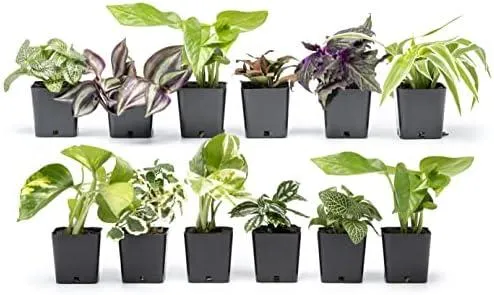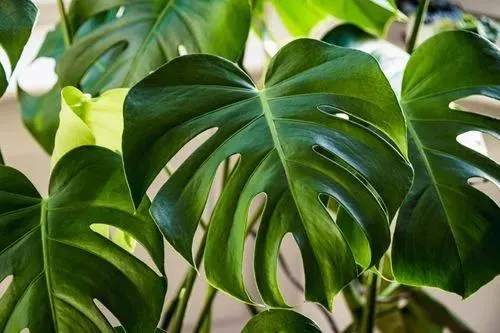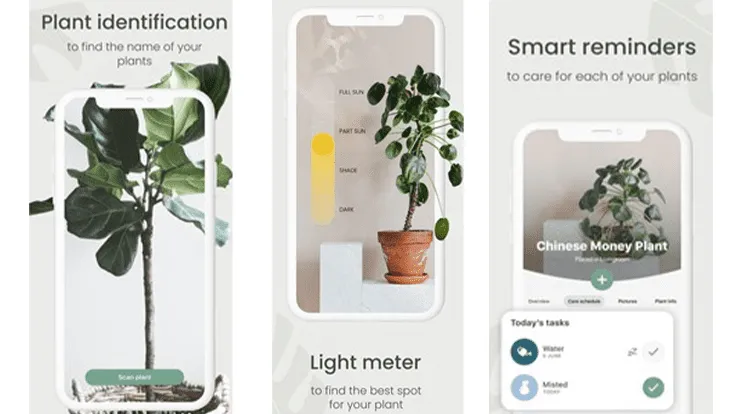Identifying Unknown Houseplants: Answering All Your Questions
Have you come across an unfamiliar houseplant in your home or a friend’s place and wondered, “What kind of plant is this?” You’re not alone – it happens to the best of us plant parents. From experience, I’ve faced situations where I was stumped by an unknown plant species. Fear not, with some detective work, you can identify mystery houseplants with confidence. In this article, I’ll cover the top questions people have when tasked with naming an unfamiliar indoor foliage friend. By the end, you’ll be able to solve the case of any plant perp. Let’s get started!
Question 1: How Can I Describe The Plant’s Appearance?
- Take a good look at the plant’s leaves. Are they broad or narrow? Smooth or textured? What shape – heart-shaped, oval, pointed? Make notes of key identifying leaf attributes.
- Examine stems. Are they hairy, bare, thick, thin? Stem features also provide clues to a plant’s identity.
- Check for flowers, fruits, or other distinguishing structures. The plant’s blooms or seeds can reveal a lot about what species it belongs to.
- Consider the overall size and growth habit. Is it a small ground cover, tall tree-like plant, or trailing vine? Narrowing down growth form narrows identification options.
Thoroughly documenting physical characteristics will allow you to search identification resources with meaningful descriptive keywords. Remember – plants can look different depending on growing conditions, so don’t rule out possibilities without considering variances.
Question 2: Where Was The Plant Purchased Or Obtained?
Knowing where a plant originated from provides valuable context. Was it from a grocery store, garden center, friend’s house? Chances are, it’s a common houseplant if found in big box stores or garden shops. On the other hand, an exotic specimen obtained from a specialty greenhouse hints at a less familiar species.
I once received an unusual air plant as a gift with no info. By learning it came from a tropical plant mail-order store, I knew to search less-common succulent types rather than typical houseplants. The origin story is a major clue!
Question 3: How Can I Search For Identification Online Or In Books?
With plant attributes and origin documented, you’re ready to start sleuthing. Here are effective identification strategies:

Online image searches: Upload photos to Google Images or plant identification apps like PictureThis. Machine learning algorithms can often recognize plants via visual matching.
Specialized plant databases: Sites like Garden.org allow targeted searching by plant characteristics. Fill out as many descriptive fields as possible for best results.
Books: References like Manual of House Plants by Swithinbank & Daeninck cover plant ID step-by-step with illustrated keys. Compare your specimen to example photos.
Discussion forums: Post clear photos on Facebook groups or Reddit to crowdsource identification from experienced plant community members.
Cast a wide virtual net, but focus searches based on the most unique identifying qualities you’ve observed. Rely on multiple reliable sources to verify matches.

Question 4: What Are Common Mistakes When Identifying Plants?
Even plant pros mess up IDs sometimes. Here are a few cause for misidentification to watch out for:
Basically, maintaining an open yet scrutinizing mindset is key. Double check any initial guess, and don’t be afraid admission ambiguity – plants can be deceptively tricky buggers sometimes!
Question 5: What Should I Do If Identification Remains Unclear?
Even after exhaustive searching, an ID may remain fuzzy. In these cases, have patience and observe over time. A plant’s true identity may gradually reveal itself through:
Kind of nasty when a plant stubbornly refuses to show its cards, but the wait could pay off. In the meantime, simply appreciate its charming mystery qualities!
So in summary, by methodically gathering clues, sleuthing identification from multiple reliable sources, avoiding common pitfalls, and remaining patient – you’ve got what it takes to crack any plant’s secret identity. Keep up the green thumb detecting work! Let me know if any other plant parenting questions come up.

Houseplant Care Tips
| Plant | Light | Water | Humidity | Soil | Care Tips |
|---|---|---|---|---|---|
| Pothos | Low | Allow top inch to dry | Medium | Well-draining | Trim vines, propagate in water |
| Snake Plant | Low | Let dry between waterings | Low | Well-draining | Tolerates neglect, repels insects |
| Chinese Evergreen | Low-Medium | Keep moist | Medium | Well-draining | Propagate via stem cuttings |
| Peace Lily | Medium | Allow top inch to dry | Medium | Well-draining | Blooms when happy, toxic to pets |
| ZZ Plant | Low-Medium | Let dry between waterings | Low | Well-draining | Tolerates low light, practically impossible to kill |
FAQ
-
What kind of plant is this?
This plant is known as a pothos plant. It’s a common houseplant that’s easy to care for.
-
How do you take care of a pothos plant?
Pothos plants are basically low maintenance. You basically just need to water it when the soil gets dry and keep it in medium to low light.
-
What type of light does a pothos need?
Pothos plants can grow in low to medium light. They do well in indirect sunlight but won’t be super happy in a spot with no light. Kind of light is best.
-
How often should you water a pothos?
As for watering, allow the top inch or so of soil to dry out between waterings. Most of the time around once every 1-2 weeks works well. But it sort of depends on the light and heat levels too.
-
Can pothos plants grow long vines?
Yes, over time pothos plants can grow amazingly long vines, especially if you give it something to climb. The vines can reach 10 feet or more! It’s kind of stunning how long they get.

-
Are pothos plants toxic to pets?
Unfortunately, pothos plants can be toxic to cats and dogs if they eat any part of the plant. The sap contains calcium oxalate crystals that can cause mouth pain and irritation. So you’ll want to keep pothos up high or behind closed doors if you have curious pets around.
-
Do pothos plants need fertilizer?
Pothos plants don’t necessarily need fertilizer but may appreciate it during the growing season in spring and summer. You could use a dilute, all-purpose houseplant fertilizer every few months. But they’ll still thrive without it.
On the other hand, pothos are known to be one of the easiest plants to care for. They’re pretty forgiving even if you forget to water them sometimes. I had a pothos years ago when I was in college that somehow survived my awful watering habits. Maybe it was just stubborn. Does anybody else have memories of houseplants from childhood? Aunt Alice used to have gigantic spider plants that seemed to hang everywhere. I wonder whatever happened to those plants? Anyway, whatever you do, pothos are pretty tough so don’t stress too much about keeping them happy. Just don’t overwater them – that’s the plants’ biggest enemy apparently. Well, that and hungry pets I suppose!
